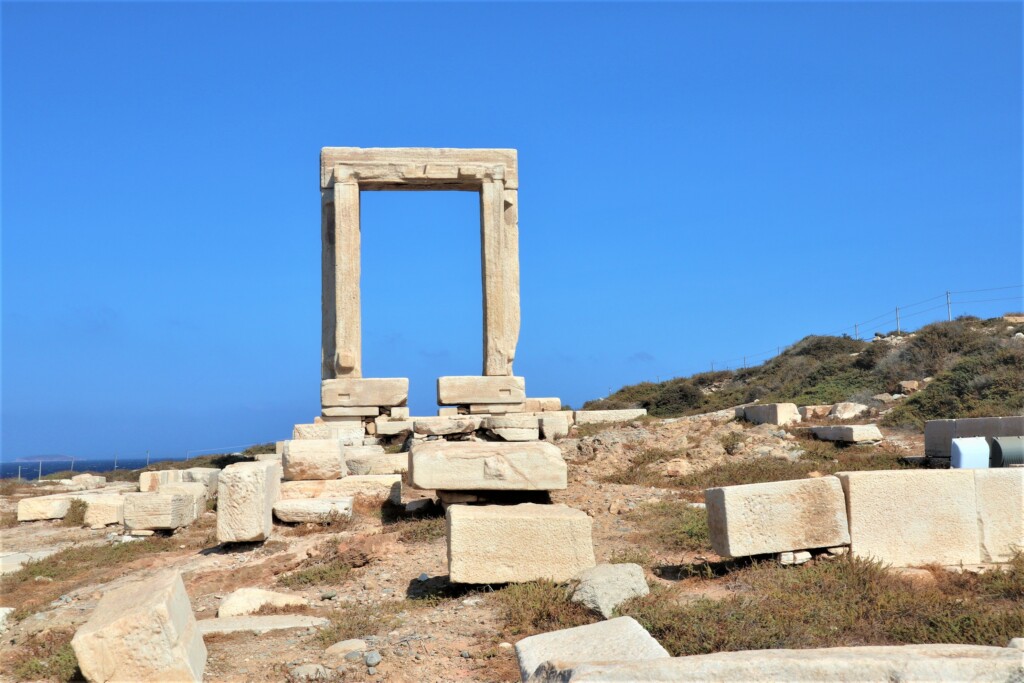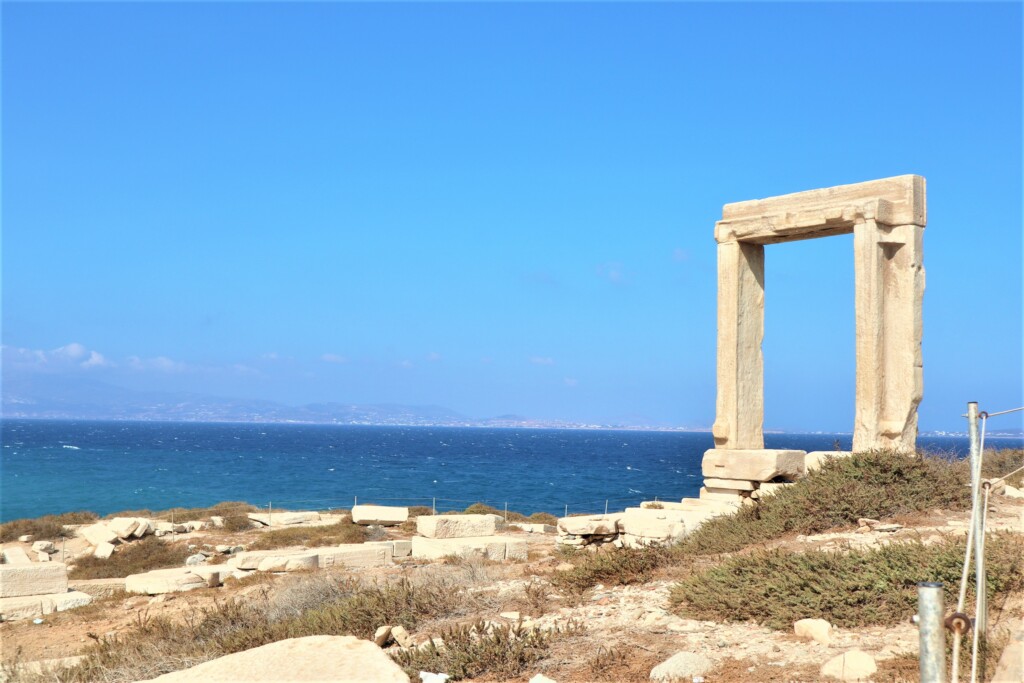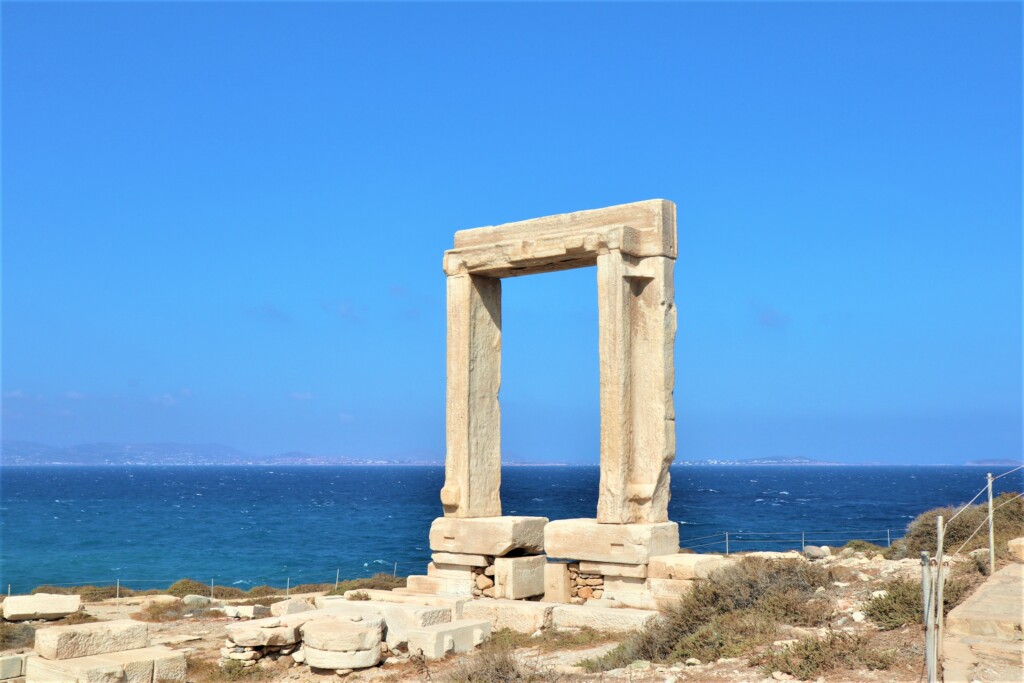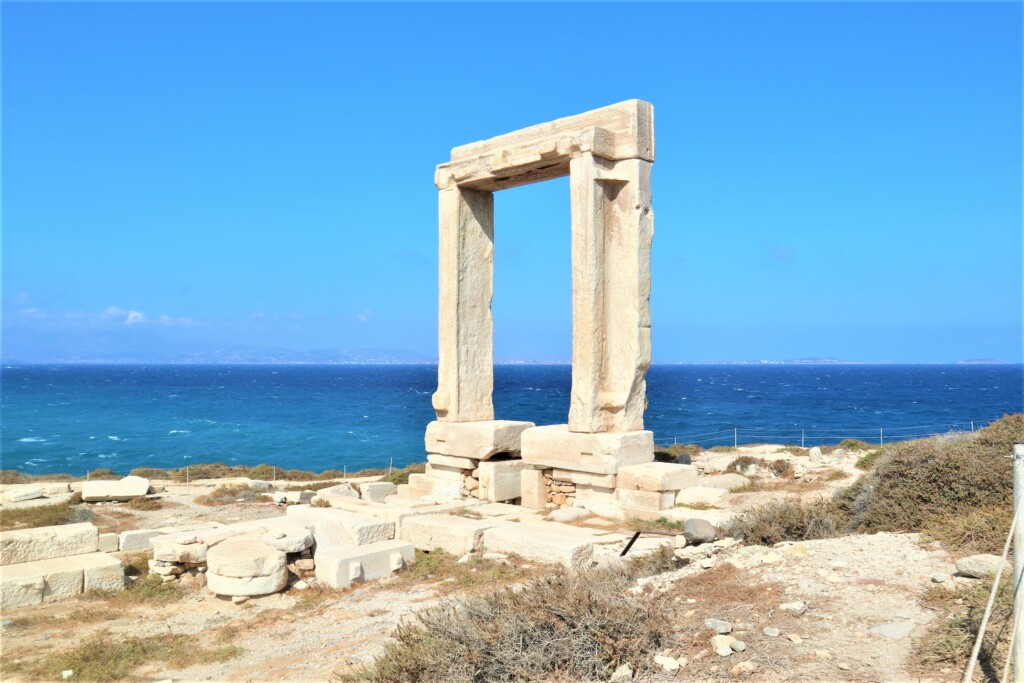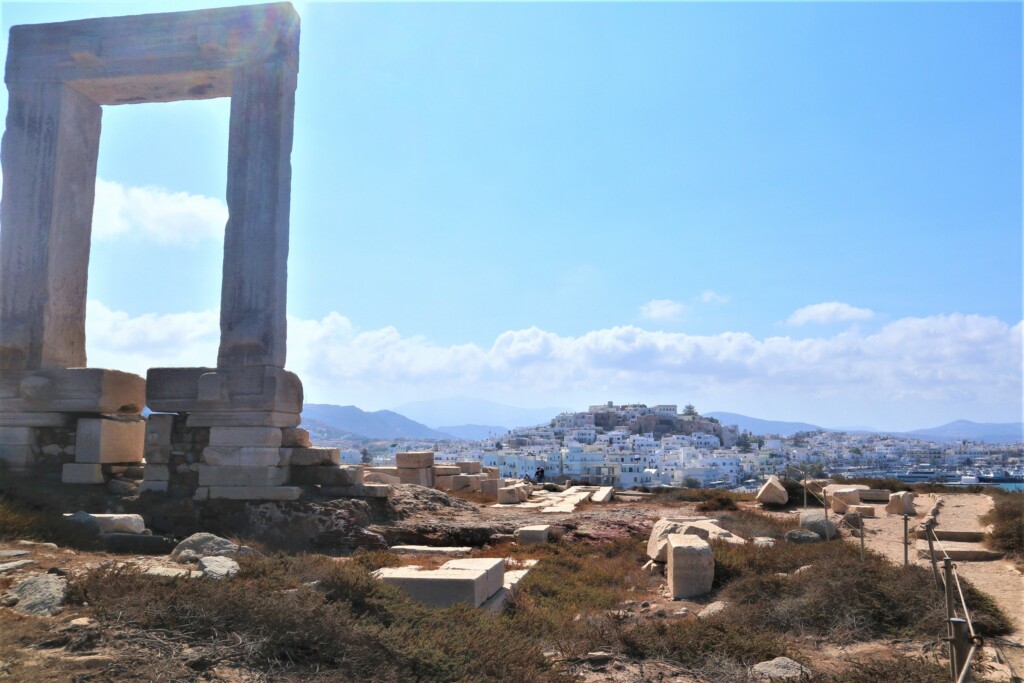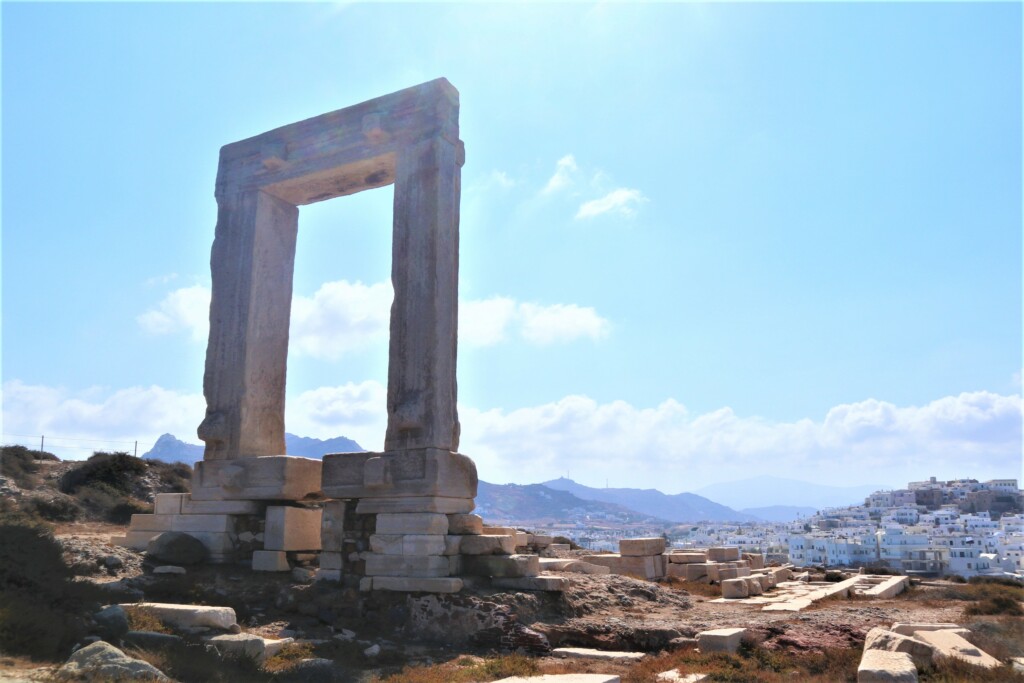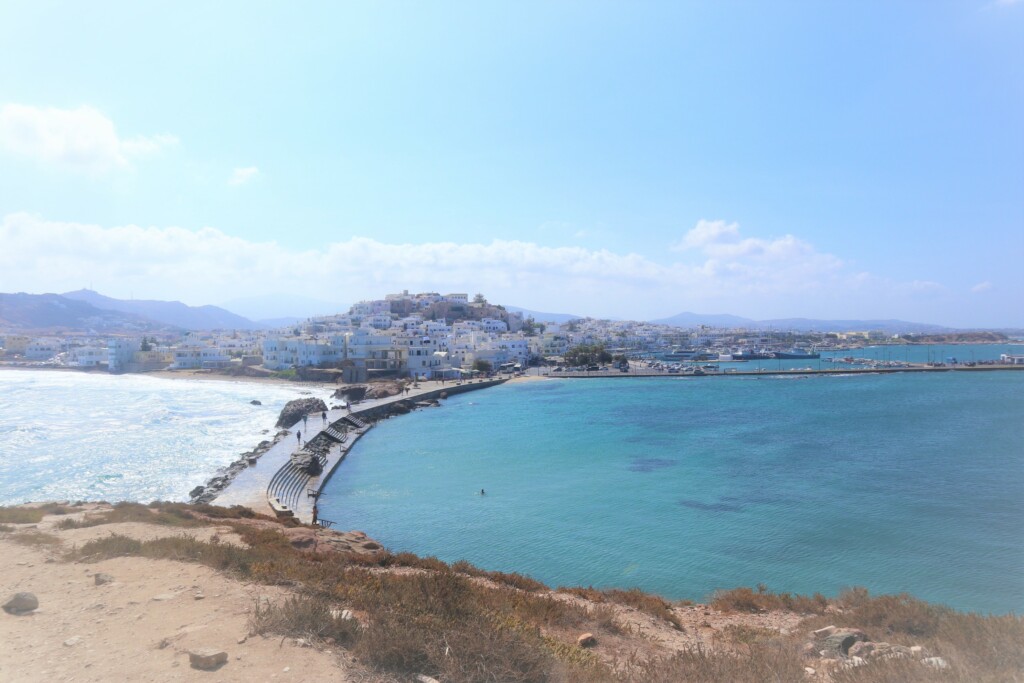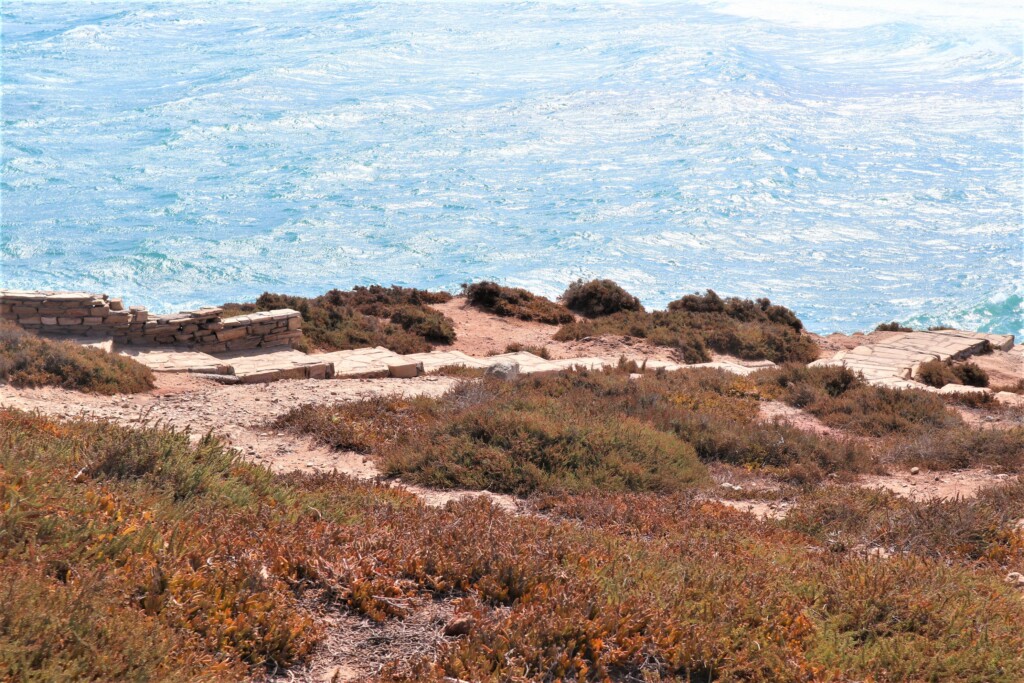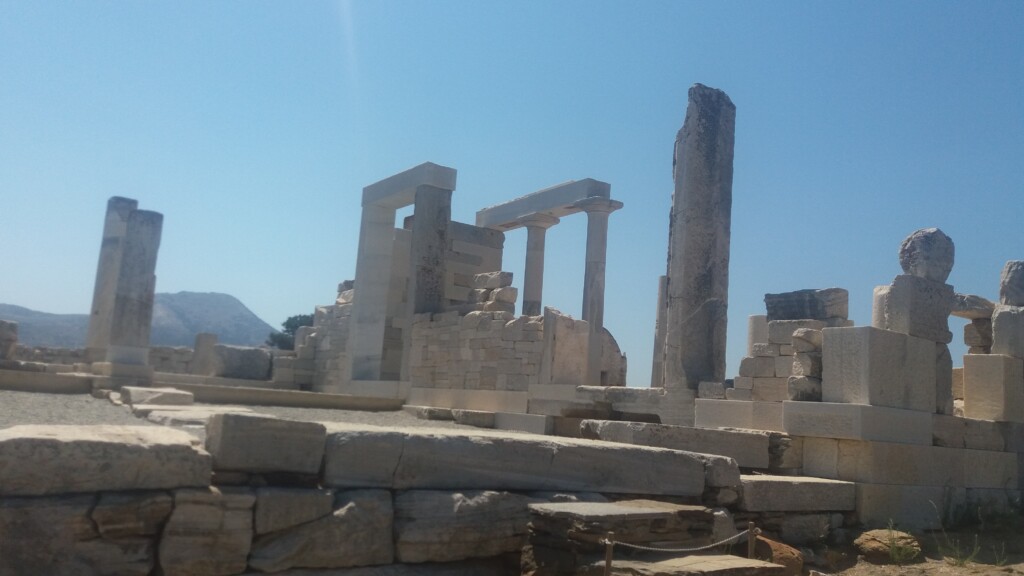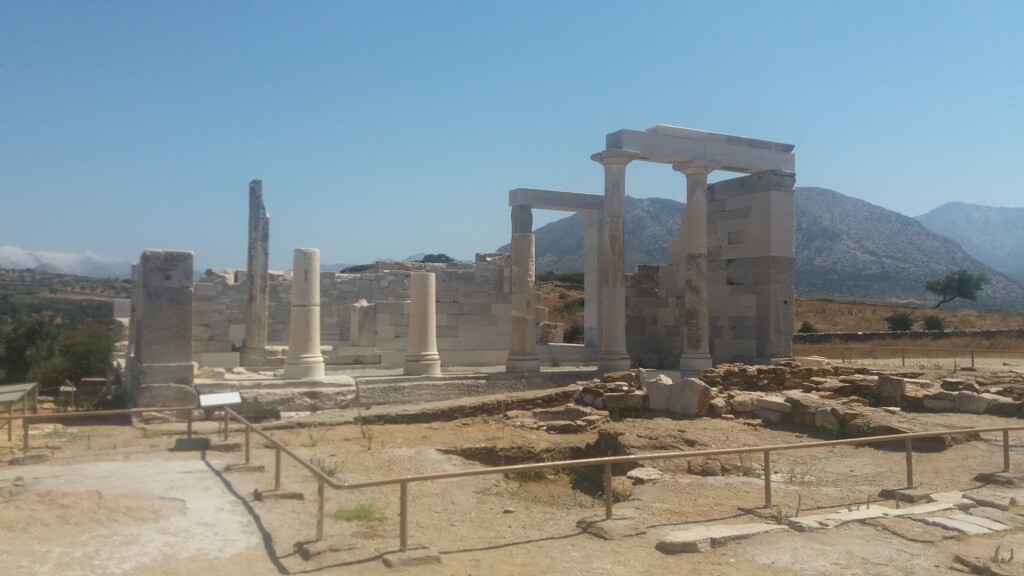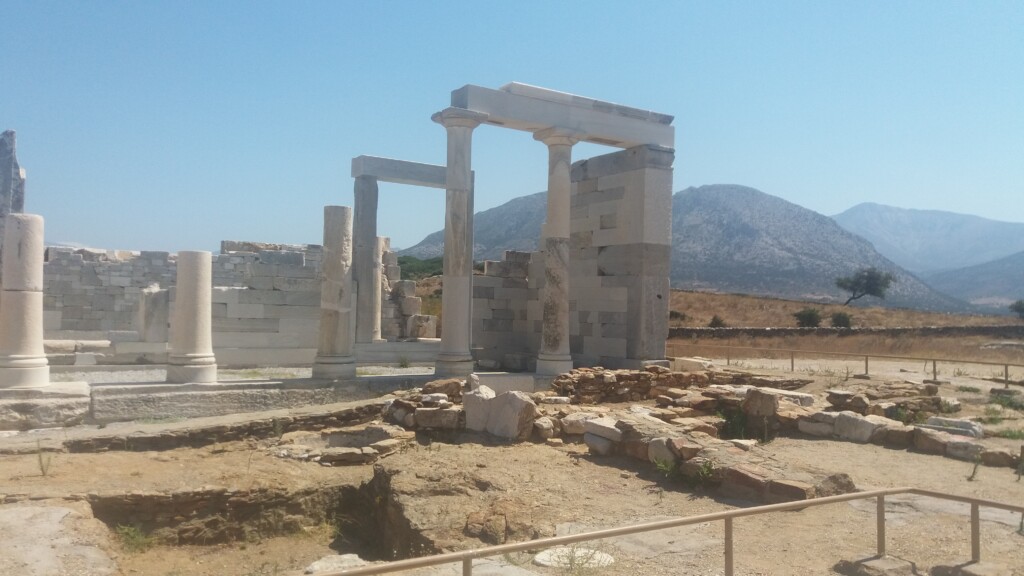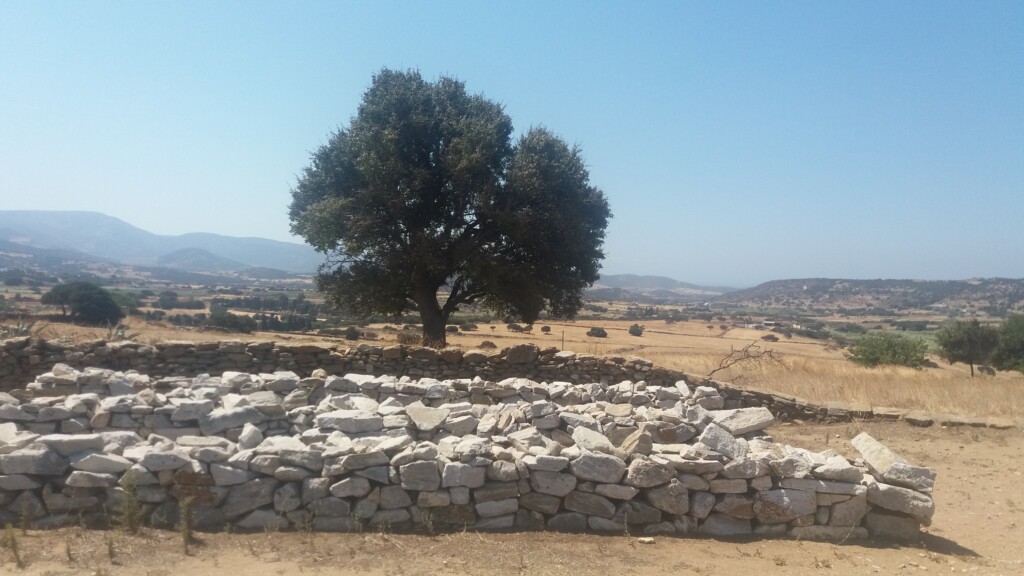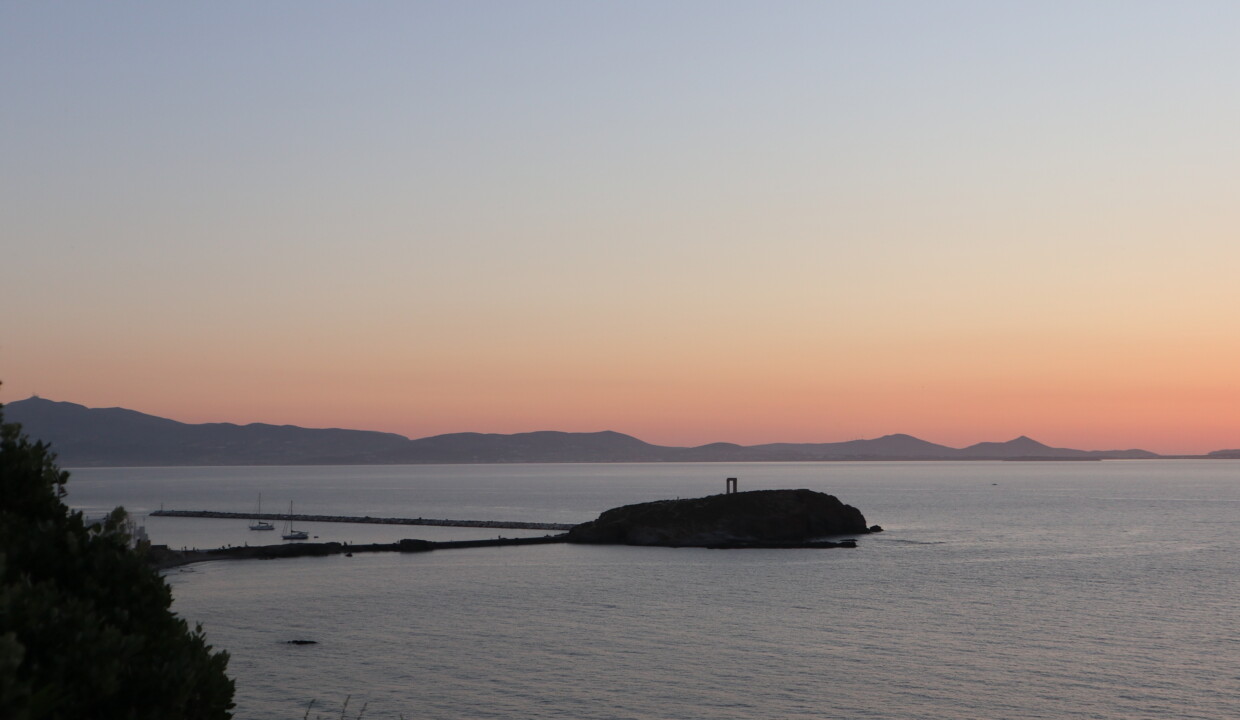
Arriving by ship to Naxos on your left you will see a construction reminiscent of a large door. Here is the great door, the only part left, of an ancient temple that stood on the island of Palatia, which in practice was a lower hill next to the hill where the Kastro stands.
Today known by all as The Gate of Apollo or Portara. Only the temple door and foundation remain of the Ekatompedo temple, which was built in 530 BC by the tyrant Ligdamide.
There are several legends and stories in the temple and even today it remains a mystery how his birth and to what divineness he was dedicated to. The temple was built in the direction of the island of Delos, where the famous Temple of Apollo is located, perhaps built in his honor?
Another legend, however, says that the temple of Naxos was built to honor Dionyso, the God of Wine, born in Naxos. The tyrant was defeated by the Spartans when the temple was not yet finished, so it remained unfinished.
In the 5th century the temple became a Christian basilica, but during the domination of the Franks, many marble blocks were removed from the temple to build the Castle, even the Turks took away many blocks until there remained only the Gate and some foundations.
From what remained, historians are convinced that the size of the temple was to be about 50 x 25 meters, surrounded by 6 columns on the short side and probably 12-13 columns on the long side. The door measures 6 meters high and 3.5 meters wide and is composed of 4 blocks of marble for a total weight of 20 tons, which is why no one could move it!
Luckily for you, the sunset seen from the door is one of the most beautiful memories you will bring home after your holiday in Naxos!
The second temple of Naxos very famous and visited every summer by many tourists is the Temple of Demeter, which stands in Sangri, a small village in the southern center of the island.
Climbing up a small hill, after a short staircase, you arrive at the ruins of the temple, built in the 6th century BC, originally where to be a square-shaped temple, with 5 columns arranged in front of the entrance. In the 6th century AD the temple was converted into a Christian church and it was decided to close the structure from the open side where the columns were located. The church was later destroyed on several occasions, probably due to pirate attacks.
What you can admire today is what remains of its former glory. Next to the temple there is a small museum with archaeological finds, such as parts of the cornice, roof and columns, which have survived over time! While walking, we recommend that you also admire the scenery and valleys that surround you, trying to savor the silence that emanates this place! But why dedicate a temple to Demeter?
Demeter was the goddess of fertility, a divineness associated with the land, which was able to protect the land, especially the one dedicated to the cultivation of wheat. Her name means “mother of the earth” but she was also considered the mother of births, the outside, fruit and living beings were the gifts of Demeter.
We suggest you also to visit the Kouros.

